




The Child Cancer Foundation’s Street Appeal is on tomorrow and Saturday. Ōhaupō couple Stacey and Jonathan shared their daughter’s story with Steph Bell Jenkins.
It has been 551 days since Waikato Hospital doctors discovered a golf-ball-sized tumour ballooning inside Fionnlagh Adams’ brain.
The four-year-old was taken to Starship Children’s Hospital that night, Saturday, September 3, 2022.
Six days later, a medical team performed a ninehour surgery to remove the medulloblastoma, an aggressive form of cancer that had grown between her brainstem and her cerebellum in just 4-6 weeks.
“Now that we go back and look at the symptoms – the droopy eye, the extra tiredness, the lower appetite, the poor coordination, the sleepiness, the vomiting – they are all signs that there is a neurological problem,” Fionnlagh’s mother, Stacey Ross, said.
“But, despite four doctor visits over the previous month, no one picked it up.”
When Fionnlagh was admitted to Starship, Stacey and her husband Jonathan Adams vowed to do everything possible to save their daughter.
“And we have,” Stacey said. “We’ve done everything the doctors told us to do.”
Fionnlagh’s operation left her suffering from posterior fossa syndrome, a condition characterised by a range of neurological problems including muscle weakness and speech difficulties.
“When she woke up, she couldn’t move,” Stacey said.
“She couldn’t walk, she couldn’t talk, she couldn’t open up her eyes. She could breathe, thankfully. She could breathe by herself, but that’s about all she could do.”
In the days since, Fionnlagh has had “countless





MRIs”, four brain surgeries, ovarian harvest surgery and 30 doses of radiation requiring general anaesthetic.
“She’s had horrific chemotherapy – she lost all of her hair, all of her eyebrows, her little eyelashes, all of it gone, everything – but we chose to save now and fix later,” Stacey said.
“We were like, so long as we get through it all and have her at the end of it then we’ve done the right thing.”
Stacey admits she simply doesn’t have the energy to begin processing her grief around everything her family has been through over the past 18 months.
“If I sit there and I think about it, or I focus on it too much, I’m not going to be able to get up in the morning,” she said.
“At the moment it’s just easier to like, push it to the side, be busy and just get on with life.”
After making sure their homeschool lessons are completed by midday, Stacey piles her five children into the car and takes the now familiar trip from their family home in Ōhaupō to Conductive Education Waikato.
The government-funded unit, integrated into Woodstock Primary School in Hamilton, provides a family-focused child development service for children with learning, communication or mobility challenges.
Shortly after 1pm on February 22, Fionnlagh, now six years old, is working with her conductive education practitioner, Melinda Ashton.
Her arms and legs trembling with effort, Fionnlagh crawls across the cream carpet of her
Continued on page 2
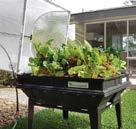

Continued from page 2
something else?”
07 777 8073

therapy room and makes her way unsteadily towards a plastic air cushion, which Melinda helps her kneel on.
“I use it to challenge her muscles and just building muscles and working on coordination,” says Melinda.
“You can see her body has all these little shakes in it at the moment because she’s having to work pretty hard.”
A lot of things are hard for Fionnlagh now.
She can swallow again and is relearning how to talk, but her voice wobbles and her words slur together. She can crawl, but cannot walk unsupported. She has a speech language therapist and attends two conductive education sessions and two physiotherapy sessions a week.
Today, she is tired. After sitting behind a wooden frame and throwing wallet-sized beanbags over the top for a few minutes, she rubs her eyes and cries out.
“Are you okay darling?” asks Melinda, who is supporting her small body.
“Hey, big deep breath,” she says, scooping Fionnlagh into her arms and laying her cheek on the girl’s mint green helmet. “Oh, I know. Oh, my darling. Shall we find
Fionnlagh continues working hard through the session, despite her fatigue. She places foam shapes on a wet mirror, crawls through a fabric tunnel and collects plastic food items to make a sandwich for baby doll Tama.
Every now and then she stops to hug her mum and rest her head on her shoulder, as her siblings sit along a wall playing on electronic devices.
Melinda is impressed with the progress her student has made since her first visit last July.
“Fionnlagh is amazing,” she said.
“She is absolutely amazing; her whole family is. They’re so dedicated, and all her little siblings sit there patiently waiting for their sister to do her exercises, and her parents extend all these activities at home. They’re just a really good family unit.”
Doctors are confident Fionnlagh will walk again by herself one day, but it could take years.
“People are like oh, she’s out of treatment, she’s done, life’s normal again,” Stacey said.
“But I’m like no, normal for me is not physio four times a week, it’s not having

Come along to our Roche St station on Saturday from 9am to noon and meet the police officers working to keep your community safe.
You’ll get a close-up look at our police vehicles, learn about our crime-busting technology, tour our station cells and meet our frontline staff.
Our specialist squads will be on hand with the ever-popular Police Dog team, Search and Rescue, and members of the Armed Offenders Squad.


There will also be a chance for anyone interested in a career with the New Zealand Police to learn more about recruitment and test themselves in aspects of the Physical Competency test.
Our colleagues at Fire and Emergency and Hato Hone St John will be joining us with static displays on Redoubt and Palmer Streets.
Road Closures will be in place on Redoubt Street from Palmer Street to Roche Street.
walkers and bath seats and gym equipment in my lounge. It’s not having my six-yearold not be able to walk. It’s not all of this, that’s not normal. We’re not back to normal. We are...I don’t know what we are. We’re adjusting to what our life is now.”
The Child Cancer Foundation is supporting about 1100 families nationwide.
“Every week this year, three Kiwi families will be told the heartbreaking news that their child has cancer,” said chief executive Monica Briggs.
“We don’t receive any direct government funding, so these families rely on the generosity of their fellow Kiwis to receive the vital emotional and practical support they need during the toughest time in their lives. Stacey Ross says the foundations supporters her entire family.
“They helped us in ways we never expected. We loved that they helped us all, from including Finn’s siblings into the beads of courage programme to organising birthday cakes for them, to inviting us all to celebrations for Christmas where we could meet other families facing similar challenges.
“Our family support coordinator made all the difference to this journey and we appreciate her and everything they did for us.”
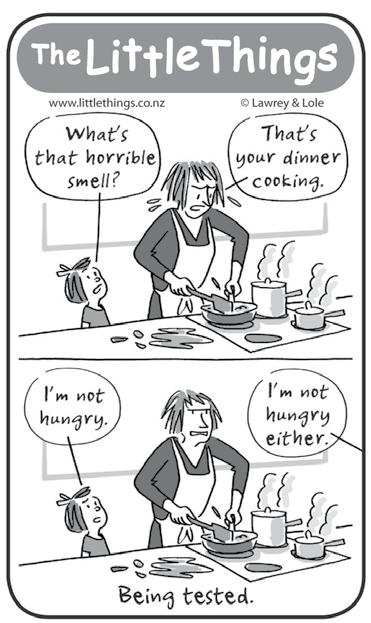








Rates going up
Rates will rise by at least 14.8 per cent from July despite Waipā District Council’s decision this week to put its 10-year Long Term Plan on hold and opt for an Enhanced Annual Plan instead. The plan gives council more time to understand government’s legislative changes and plan accordingly but budgetary challenges were still the same, council deputy chief executive Ken Morris said. The council will get a revised budget at its meeting next week.
Pou approved
Te Awamutu-Kihikihi Community Board and Waipā’s Strategic Planning and Policy committee have approved concept plans for a Te Ruranga o Ngāti Apakurafunded pou which would be installed between Mutu St and the Mangaohoi Stream. The $20,500 pou, near the Kaipaka Pā site, would reflect preEuropean trade of flax, flour, fruit and tuna which were eventually exported from Waipā to Australia and the United States from the 1800s.
Elms at risk
Checks are being made on 250 civic owned elm trees in Waipā after the fungal disease Dutch elm disease was found on a private property. The disease was first established in New Zealand in 1989 and is moving south – it was reported in Huntly in 2021.
The Waikato Regional Council’s Kauri Protection programme has been named as a finalist in the New Zealand Biosecurity Awards. The winners in eight categories will be announced on April 8.
A total of $32,500 is being made available through the second round of applications for funding through the Creative Communities Scheme. Waipā District Council distributes funds on behalf of Creative New Zealand, to support, promote, and increase participation in the arts.
Waipā councillors have extended an olive branch to opponents of the Te Awamutu War Memorial Park upgrades after an impassioned plea from community board chair Ange Holt.
Fighting back tears, Holt told the Strategic, Planning and Policy committee this week that opponents of the plans became angry when they felt ignored by council.
The Te Awamutu and Kihikihi Community Board asked the committee to put all changes for the park on hold while a full review was conducted.
The park opponents – a group calling themselves the Memorial Park maintenance committee - are not the only ones feeling shunned by council bureaucracy.
Te Awamutu Business Chamber chief executive Shane Walsh, who also chairs Destination Te Awamutu, said council’s decision to pull its operational funding from the Cambridge and Te Awamutu i-Sites showed councillors were listening to what staff were telling them and not to the people who knew what they were doing.
The information centre’s manager Bea Schiller has resigned and finished on Friday while two staff members have been made redundant following the council’s behind-closed door decision to pull its annual funding - $157,000 this financial year – from July 1.
“They’re not making decisions with everyone’s view,” said Walsh.
The double whammy criticism
is the last thing the council needs as it grapples with cost of living challenges but councillors’ conciliatory tone over the park showed they are taking more heed of public feeling.
They agreed senior councillors and council staff should meet with the opponents, identify core outstanding issues and seek to amend the Concept Plan if required.
Andrew Brown said park changes, despite being well canvassed in recent years, were obviously not noticed by people with a passionate interest.
“We have a group of people who I am assuming have suddenly realised something they are really passionate about is being enhanced and improved. So, they want to be heard.
“I do not want a group of people in our community who feel they are being ignored.”
Clare St Pierre said the original concept plan did not do justice to the War Memorial portion of the park and there had been a lot of emotive reaction.
“I do think we need to listen to the community and try and give them an opportunity to come together.”
Dale-Maree Morgan said there needed to be a way forward.
“We have an impasse that is not cool for our community,” she said after offering to be involved at improving the relationship between staff and the maintenance committee.
Marcus Gower disagreed, though, saying the project had gone through a “really substantial process.” More


consultation would need more money and take council time.
“I don’t see the point.”
Walsh this week told The News, Destination Te Awamutu had employed former i-Site manager Roz Liddell on a part time contract to replace Schiller. Liddell – who worked at the i-Site between 2000 and 2007 - recently sold her florist business in Waitara and has returned to the community.
The only way the i-Site could continue functioning was through this arrangement and with volunteers, he said.
“That’s basically the only way so this is a call for help.”
If his organisation and Destination Cambridge – whose funding was also cut – had been given the time and opportunity to consider their futures, they might have come to an agreement to share managers.
“There was no process. We didn’t get that opportunity. It was just bang. It was a very narrow focus.”
Te Awamutu councillors had told him the organisation could make submissions to the Long Term Plan.
“By the time we are able to do that, the horse has bolted,” said Walsh.
Pirongia’s tower action group will argue it was a case of losing the plot.
Late efforts to encourage a rethink of the site for Pirongia’s cell tower have failed – and led to calls for a local body to be more vigilant.
The Pirongia Tower Action Group (TAG) says a “small plot” of land zoned commercial, amidst residential housing, and close to a school and daycare, has left the community vulnerable to exposure of radiofrequency radiation from the tower.
The community will have state of the art 5G coverage from the tower, 40 metres from some houses and a little over 100 metres from Pirongia School’s boundary.
“Going forward we would like [Waipa District] Council to carefully consider how it could better protect

residents in the future,” a statement sent to The News by Ruth Webb of TAG said.
More than 2000 people backed a petition in 2019 opposed the site which was eventually settled on and announced as a fait accompli earlier this year.
TAG – re-established almost immediately - spent four weeks trying to communicate – without success – with Connexa, the company which made the announcement.
“Connexa was unwilling to meet with Pirongia residents, preferring only communication via telephone and email,” a TAG statement said.
Ruth Webb says with 5G being a new technology, questions remain about health and safety implications for residents living near a cell site.
“The past has taught us that new products to the market, even those initially considered to be wonderful inventions, need to be treated with caution.”
By Mary Anne GillWaipā mayor Susan O’Regan has confirmed her council has no intention of selling its shares in Hamilton Airport but could be in the market to buy more.
Speaking to The News’ sister publication Waikato Business News, O’Regan said the council was fortunate to have such a strategic asset.
The airport sits at the northern end of the Waipā district and recent plan changes have opened it up to industrial development.
O’Regan said the council had not even signalled selling the shares was up for review; Waipā owns 15.6 per cent.
“The recent plan change opens up a very good amount of airport owned land and the share value is likely to increase substantially in future years which means it could be beneficial to buy more if we were ever in the position to,” she said.
The other shareholders include Hamilton city (50 per cent), Waikato and Matamata-Piako (15.6 per cent each) and Ōtorohanga (3.2 per cent). The five councils paid $2.125 million in 1989 and another $12 million in a shareholder call in 2008-2009.
The airport is now worth $234 million.
Waikato Business News also reports from the opening of Union Square and the Maersk Ruakura Superhub in Hamilton, meets Simon Bridges in Matamata, Prof Paul Spoonley in Cambridge, attended the Northern Infrastructure Forum in Hautapu, celebrated Chinese New Year where food was tossed and turned aimlessly and was Out and About capturing people, including Waipā residents, at various events.
• See: wbn.co.nz
We believe that each funeral service should be as unique as the life you are celebrating. When a funeral is personalised, it creates a special space for sharing precious memories, telling stories, and simply being together with friends and family.
Rosetown Funeral Home are dedicated to providing personalised and meaningful funeral services, and are happy to discuss new ideas, pre-planning and/or pre-paying for your funeral. We are here for you in your time of need, so please get in touch anytime to discuss your options.

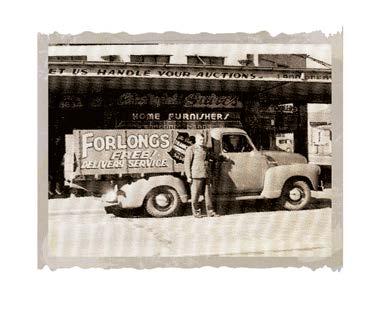



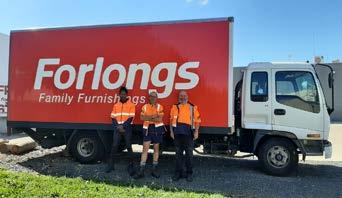

Fencourt’s Andrew Johnstone is known to Good Local Media readers as the subject of a Costa Botes documentary When the Cows Come Home. He has also come out on the side of a planned incinerator for Waipā and put his case today. The News has not formed a view on the application but is encouraging debate. Don’t Burn Waipā has been invited to respond in next week’s edition of The News.
I want to recycle, I really do. I compost my food waste and dutifully rinse glass containers and put them in the Blue Bin and wash whatever plastic the Yellow Bin will take, carefully removing the lids and putting those with the non-recyclables in the yellow landfill bag. But when I haul that bag to the roadside for collection, I look at what I’m throwing away and wonder why I bother.
The fact is, when it comes to recycling New Zealand is an ‘underachiever’. What do we actually recycle? Not even the relevant Government departments know. The best guess is around 25 per cent.
What we do know is that our recycling rate is among the lowest in the developed world and that around 75 per cent of our waste ends up in landfill.
Proper recycling systems require investment, subsidy and long-term planning but successive governments have failed to do anything meaningful about our growing waste problem and the result is a booming landfill industry.
According to the Ministry for the Environment, New
Zealand will be a lowemission, low-waste society with a circular economy by 2050.
That’s a long way off and the ministry does not sugar coat the complexity of the challenge. The fact is that for now New Zealand is burdened with a complex waste stream of which a good 50 per cent is almost impossible to recycle and landfill is the only method of dealing with it. Or is it?
Many years ago, I visited the Hundertwasser designed toilet block in Kawakawa. I was deeply impressed and set about learning more about the man, which is how I first heard about Waste to Energy incineration.
The Spittelau Waste to Energy plant is located in the centre of Vienna. In the late 1980s it was damaged by fire and as they planned the rebuild the city decided to do something adventurous with an otherwise drab industrial building. Hundertwasser took on the job and the result is one of Vienna’s most beloved landmarks.
Vienna’s most prominent piece of public art burns



250,000 tonnes of waste a year, producing electricity, heating and hot water for some 50,000 households.
Using the latest technology the fumes are scrubbed clean of toxins before they are released to the atmosphere and as with all waste incinerators, any valuable mineral resources are removed from the ash before it is landfilled or repurposed. There are 2500 waste incineration plants in operation internationally.
Germany operates 156 incinerators and recycles 67 per cent of its waste. Singapore operates four incinerators

and recycles 60 per cent of its waste while Sweden operates 34 waste to energy plants with a recycling rate of 49 per cent and growing.
Most countries operating waste to energy technology are doing very well with recycling though there are exceptions. With 1200 incineration plants and a 20 per cent recycling rate Japan prefers to burn rather than reuse.
Meanwhile on the other side of the Sea of Japan, close neighbour South Korea operates 183 incineration plants and is the world’s third best recycler. Germany landfills 10 per cent of its waste, in Sweden and Singapore it is one per cent and mostly incinerator ash.
As long as there is a strong governmental commitment to recycling, waste to energy incineration does not adversely affect recycling rates, which is one of the main claims being made against the technology by those who are opposed to the idea of a Waste To Energy for Te Awamutu.
Then there’s the claim that the proposed plant will result in a pall of toxic smoke

hanging over Te Awamutu, one that will cause disease and pollute farmland. This might have been the case 50-60 years ago but not today.
The fumes from modern waste incineration are cleaned of toxins and particulates by a variety of processes and most of what comes out the smokestack is carbon dioxide and nitric oxide and it is typically less than the atmospheric emissions from landfill sites, which includes both carbon dioxide and methane.
Modern waste incineration plants are designed to be environmentally safe but strict government oversight is part of the equation and if New Zealand goes down


this route, we need to get this right. The European Union and Singapore both offer legislative examples worth emulating.
Opponents of the proposed Te Awamutu plant have been using misinformation and disinformation to create a climate of fear around the issue and that so many, including environmental and zero waste Non-Government Organisations, consider this a legitimate strategy brings into question issues of integrity and trust.
Waste to Energy could be a boon for Waipa and the nation as a whole, let’s not let propaganda driven hysteria ruin an opportunity to do things a little better.
























put, we use them to say the stuff above it is younger, and the stuff below it is older. This gives us relative ages. In the lab we can use different techniques to narrow this down even further. For deposits younger than 50,000 to 60,000 years we can use Radiocarbon, or Carbon-14 dating if we have carbon (for example, wood) to calculate the age.
which is actually quite cool for a volcano. That is the minimum though, and it is quite hot for us, Seeing this so far from the vent tells us that it was a very large eruption, and everything between me and the vent would have been devastated. In fact, this was the most powerful eruption in the past 5000 years, globally. Thankfully these eruptions are rare compared to the much, much smaller ones.
The eruption produced a massive pyroclastic flow, made of pumice, ash, and hot gas that raced across the landscape at over 200-300 metres per second, devastating around 20,000square kilometres. My colleague and I discussed what it would have looked like where we stood all those years ago. A huge, expanding, grey cloud rising over the hills, filling up our view. Would we run? Yes of course we would try. Would it help? With something this big, no.



This particular Taupō eruption deposit is a great marker bed for the region. It is mostly whiteish pumice and ash, and it is very easy to tell apart from the other deposits because of the significant amount of black, charred wood fragments. We call this deposit an ‘ignimbrite’. From the components we can already tell two important things – pumice forms when viscous magma is blown apart violently by rapidly expanding gas bubbles, and the presence of burned wood tells us that it was hot. One study found that the minimum charring temperatures ranged 269 to 398°C,
Seeing deposits in the field I understand a little more about them, and I have even more questions. When I get back from the field, I scour the research to see if someone has answered them. It takes many researchers to understand events like this, each building upon the work of the last. Like detectives working to uncover the secrets within the deposits, we piece together the timeline from the magma forming far below the ground, through to how the landscape was altered. We then get to stand in the field with images in our minds of what those eruptions looked like, and marvel at how our landscape was transformed in a geological blink of an eye.
Meghan Hawkes looks back on the news as reported in 1937.
A whirlwind hit the Orakau farm of Mr J Cullen causing extensive damage in just a few minutes.
It demolished a milking shed and a barn and also overturned a nearby bach. A haystack in an adjoining paddock received the full force of the blast and was scattered over a wide area. Large poplar trees were uprooted and stripped of their foliage, while walnut trees which had stood for over 50 years, came down. Power lines and telephone wires were damaged by a macrocarpa tree two metres in diameter, which was torn from its roots and thrown to the ground. A wagon, a hay mower and a sledge were also damaged.
“I have never seen so much destruction and desolation in such a short space of time,”’ said Mr Cullen. “The wind was preceded by a loud rumbling noise and at first I thought it was an earthquake.”
The whirlwind seemed to be of a purely local nature and did not damage adjoining properties.
With a dry spell reaching its third week, early peat fires in the Waikato were continuing unabated and each day the haze of pungent peat smoke thickened around Waikato towns. The fires did not appear to be spreading rapidly due to the fact that the wind had been very calm.
The areas most affected were Patetonga, Koramatua, Paterangi, and the northern portion of the Rukuhia swamp. In the evenings the odour of burning peat was particularly noticeable and mornings rather dull as the result of smoke in the sky. The smoke was so thick in some areas that motorists had to slacken speed considerably as a measure of safety. At Paterangi flames were visible rising from burning areas in the centre of
the swamp. After abnormally wet and cool summers in the Waikato during the previous two years, residents were noticing the early heat more this year. Everywhere the warm air was remarked upon, as the temperatures steadily rose.
Criticism of the Great South Road between Ōhaupō and Te Awamutu voiced by a South Island motorist was questioned by several other motorists who asked a reporter to drive a car over the road to see whether the criticism was warranted.
A fairly light car was taken over the worst portions of the road. Major works were in progress but there were sufficient notices posted to warn the motorist to drive slowly and carefully. The car was driven slowly and it was found that even the worst part of the road was easily negotiable. The car was taken over a stretch of road at a higher speed and the ride was not pleasant and springs liable to go, but this was solely due to the speed, showing that the southern visitor had not observed the warnings.
The Yellow Peril - ragwort - was by no means so much in evidence around Kihikihi as in former years, the work of eradication by the Waipā County Council proving very beneficial. Farmers who were formerly hesitant about the success of ragwort control now spoke in glowing terms of the results. They were able to carry more stock and keep them in better condition, while losses were fewer. There were still, on many farms, thousands of ragwort plants, but farmers realised now how best to treat the pest and certainly would never allow it to obtain the mastery of productive lands again.
It is clear that Waipā District Council has, at long last, come out into the open regarding a future traffic plan for Cambridge.
Although, to be more precise, a general domicile for a possible third river bridge crossing. No surprise that it is in the general area of the Matos Segedin complex but matters of access and egress are left very much in the air. Again, to be fair to the council, they are listening to observers from outside of the council meeting room and power to their arm for that.
I suggest we all take the helicopter (or the drone) a little higher and ask ourselves just what traffic would utilise such a flow lane opportunity given that the ancient high bridge would be restricted to pedestrian and low speed vehicular traffic (bikes, scooters, pedestrians, four-wheel drive carts etc. In other words, while it is obvious that most of the traffic from Te Awamutu (and further) plus Kaipaki Road sourced movements would, in the main, use the third bridge.
The key question for those coming from the south and west is – what then? The target for the greater majority will be the Waikato Expressway - the extension to which (totally frustrated by the restrictive 2017 Labour/Greens government) will hopefully be in place all the way to the new roundabout at Piarere. A draft (and very much a draft) diagram suggests that, once the bridge is crossed, the (generally) northbound traffic will come to a screaming halt at the roundabout by St Andrew’s church. It is a pinch point that is already over-utilised with notable waiting times during commuter and school hours traffic movements.
Proponents of the bridge have been demanding attention for many years, but it is clear that a whole of movement(s) plan needs to be discussed sooner rather than later.

This before the fast-growing residential boom that Cambridge is experiencing (especially on the north side) chokes off all avenues of sensible movement.
The marked growth of tonnage flowing through the Port of Tauranga has shown locally in Cambridge with a noticeable increase in truck traffic linking the port with the King Country and Taranaki. Increases in export goods movements is very healthy for the country providing that the channels of movements are clear and un-cluttered. Clearance of a local pinch point to suit local Cambridge needs is unwelcome if restrictions to overall long-distance flows are increased.
It could be argued that the long-distance export-bound truck traffic should head towards the Tainui-supported large freight interchange alongside the railway link at Ruakura. However, many truck operators will die in the ditch to crawl over the dangerous Kaimai Hill rather than hand their freight to the severely loss-making railway operator. However, should this commence-sense solution prevail, the heavy traffic thundering through Cambridge would be markedly reduced.
I am very much an exponent of free trade and free operation of the country’s infrastructure but sometimes there is a need for an element of governmental common sense directional control required.
This week our country officially moves into the season we call autumn. In the church year, we are in the season called Lent. It’s a bit of a weird name for those not used to church ways, but the weirdness has real grounded reasons.
The Bible tells us that before Jesus began his adult work of challenging the cultural, justice and spiritual practices of his day, of lifting people out of oppression, of healing and of demonstrating and teaching God’s love for them, as with any challenging task, he needed preparation.
The first part of this preparation was a public affirmation from God that Jesus was on track and ready for the next step.
That was immediately followed with Jesus being sent into the desert; a place of wilderness- apart from everyday life, from loved ones, support systems, and distractions - to prepare his spirit for the work ahead.
It was a testing time, without which Jesus may not have had the courage to face what came next.
In the church we call this a wilderness time - and we recognise that most of us also have a wilderness time in our lives. It may be triggered by change, by loss or through bereavement.
Life-changing events can “unearth” us, leave us mooring-less and lost. Jesus’ experience in the wilderness serviced to ground, strengthen, and equip him.
We who want to learn from Jesus, believe that wilderness times even when unsought and painful, can in time, and with support, equip us for a new direction, new life.
During Lent, Christians choose to experience a kind of wilderness time,
emulating Jesus’ desert days.
We seek to take time away for our usual distractions and amusements.

We work to observe those around us more intentionally. We spend time listening to others and try not to fill conversations with our words. We also “listen” to God.
It’s hard to describe that kind of listening, because it actually involves all our senses and our intelligence.
We study our bibles together, we talk with God and we stay alert to the world around us. All these ways can combine to help us “hear” God.
In Te Awamutu the St John’s church on Arawata St will be open during the last week of March Monday to Thursday.
Anyone who would like to spend time in the quiet of God’s presence is invited to come in.
On Good Friday, we will gather at St Patrick’s Church at 10am and walk through the main street, stopping along the way to think about what it must have been like for Jesus who also walked through a public path on the way to his death.
We’ll arrive at St John’s to listen to the part of the Bible that tells of Jesus final moments. We’ll be in awe again at all that Jesus suffered for us.
We will remember again that wilderness , Jesus’ journey and the result.
In Te Awamutu there are at least eight churches. If you are in a wilderness, seeking a new direction, or feeling lost, those in your local church can walk with you through it. We have learned from the best example!

Just over $100,000 allocated by Waipā District Council to a Covid recovery fund will be returned unspent to council coffers where the community needs caused by the changing financial landscape is greater.
The council approved a $795,000 Covid-19 recovery package in June 2020 to help the district recover socially and economically from the pandemic.
Part went towards employing two community advisors – Gina Scott and Corren Ngerengere – plus an increase in event funding and district marketing.
The rest went towards a $400,000 contestable fund to help iwi and district organisations provide positive community outcomes post Covid.
Scott told the Strategic Planning and Policy committee this week the money provided much needed financial support.
“Clubs and community organisations were able to continue to pay regular expenses i.e. insurance/ maintenance, to ensure they remained operational post the pandemic.
“Extra counselling

services were made available to tamariki through local providers working alongside local primary schools and adult counselling opportunities were offered via the Cambridge Community House,” she said.
The community house got two grants, one for $105,040 in November 2020 – the largest grant to any organisation – to support an additional counsellor and social worker. The other was
for $4500 in September 2022 for two talk groups and a community barbecue.
Funding of $10,000 to the Te Awamutu Community Food Forest 18 months ago resulted in 300 fruit trees being planted enabling sustainability of the orchard for years.
Other organisations to make a difference were Te Awamutu Citizens Advice Bureau who trained new volunteers and upskilled existing staff; Te Awamutu




disability provider ConneXu’s Hauora project which provided life skills so disabled clients could manage their own wellness and Cambridge Safer Community Charitable Trust’s neighbourhood support initiative towards developing emergency plans.
“Due to the changes in the national approach to Covid-19 since the last fund allocation, and other pressures being faced by


the community, it would be very hard to directly identify support opportunities relating specifically to Covid-19 recovery,” said Scott.
The committee approved returning the $100,213 left over to the council’s cash surplus.
Total grants made since
November 2020: September 2022 - ConneXu 2020 Trust - The Hauora Project $13,008, Te Awamutu Community Food Forest $10,000, Ōhaupō Community, Sport and Recreation Centre Trust $6500, Citizens Advice Bureau Te Awamutu Incorporated $6899, Cambridge Chamber of Commerce $5000, Te Awamutu Sports $5000, Zion Church Trust - Counselling in Waipā Schools $13,093, Children’s First Charitable Trust $3000, Cambridge Life Skills Institute Trust $5000, Cambridge Community House $4500, Cambridge Safer Community Charitable Trust - Neighbourhood Support $5000, Grandstand Trust $8000.
June 2022 – Waipā District Council for community librarian $31,000.
December 2021 – Mighty River Domain $3034.99, Te Awamutu Safer Community Charitable Trust $30,000, Cambridge Safer Community Charitable Trust $30,000.
November 2020 – Ngāti Koroki Kahukura Trust $20,000, Ngāti Apakura Runanga Trust $10,000, Cambridge Committee of Social Services $1000, Citizens Advice Bureau Te Awamutu $5314.62, Cambridge Community House $105,040.
Kiwifruit resolution?
Discussions still continue between Waipā council and Parallel Road landowners Nick and Vanessa Jennings over whether an Environment Court hearing appealing a decision to establish artificial structures and shelterbelt planting for a kiwifruit orchard will proceed. Mediation failed in November over the council’s decision to allow the orchard to proceed near Ōhaupō.
Consents down
There was a decrease in the number of building consents issued by Waipā District Council in the three months ended December 31. The scope of the work for the 326 building consents – down 141 on the same period the previous year – were a mix of commercial and residential.
Pedestrian plans
Waipā District Council has unveiled a series of improvements proposed for Walton and Rewi Street in Te Awamutu.
Four caught Controlled purchase operations between the police and Waipā licensing authority in the last three months of 2023 found four businesses which sold alcohol to minors.










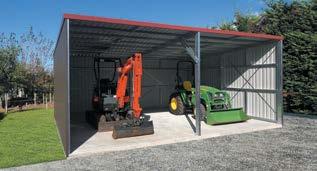







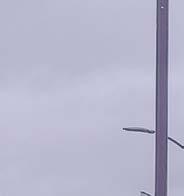
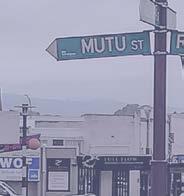

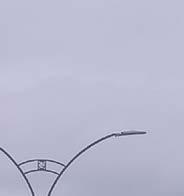
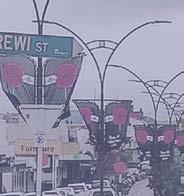



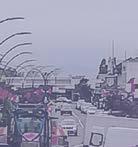


































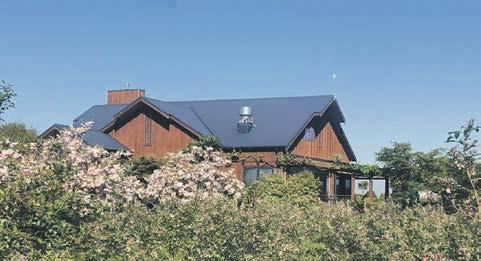
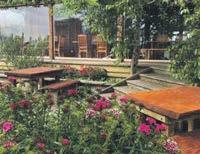
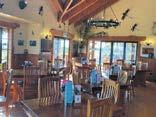







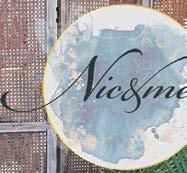


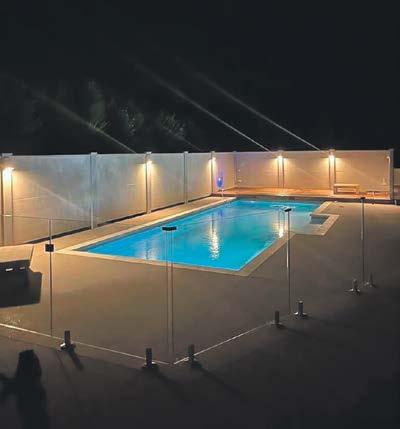






































Quick crossword
Across 1. Indulge in (6)
5. Loathe (6)
8. Regret (3)
9. Positive aspect (6)
10. Beauty treatment (6)
11. Money (4)
13. Crooked (8)
14. Moor (5)
15. Harmlessly eccentric (5)
19. Pureed drink (8)
Last week
21. Sack (4)
22. Seasoned sausage (6)
23. Line on weather map (6)
25. Viral infection (3)
26. Accompany (6) 27. Dusk (6)
4. Pitiable person (6)
12. Controversial situation (3,6) 16. Kiln (7) 17. Frugality (6)
Brilliance (6)
Resources (5)
Have (3)
Across: 1. Teach, 4. Choice, 7. UFO, 8. Slalom, 9. Refuse, 10. Commando, 12. Ogre, 13. Strand, 15. Enough, 16. Meow, 17. Suppress, 19. Domino, 20. Answer, 22. Ban, 23. Sneeze, 24. Traps.
Down: 1. Talk of the town, 2. All, 3. Human, 4. Corrode, 5. Off-colour, 6. Cash registers, 11. Meanwhile, 14. Disrobe, 18. Plant, 21. Spa.




Wordsearch
XOCUSTANKANHRBANHP
AZRAELSFEIMCBVCODA
WORDDCDHASIIHKWRSE
NBZJORVRETPASOKYEU
PRRTYHFSNLIILYSBVC
GOTDVEVAEKLLBNUPMP
NWEERRMSUNEEUOBEIM ONMMOOCSEFIPYTMPPJ
MIIYRIXOGGOLCLAINR INZHSCUNREAIQIICOI
CGKROLOATBRUYMQCSD OTCPTLONUYKNGGUEYY UEIHNDECLDTVENRKNL PNRNAMXEKSEKLCAANL LNEOCBEVHRENEJNLEJ
EOMWKJWTSLFFFALBTJ TSIDOGGERELEVATCOI BALLADNNLEDNORISPM
ASSONANCE
AUDEN
BALLAD
BLAKE
BROWNING
BYRON
CANTO
CODA
COUPLET DOGGEREL
DRYDEN
ELEGY
EPIC FEET
GNOMIC HAIKU
HEROIC IAMBUS
IDYLL KEATS
LANGUAGE LEAR
LIMERICK LINES

LONGFELLOW LYRIC METRE MILTON OCTAVE ODES OWEN POEM POET REFRAIN
RHYME ROMANTIC
RONDEL SCOTT SHELLEY SONNET TANKA TENNYSON VERSE WORD
Sudoku
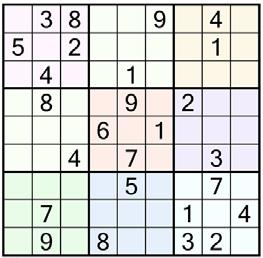
All puzzles © The Puzzle Company
Last week

Wordsearch




























The Te Awamutu App is the go-to place for your latest mobile news, sport and opinion.
Every day, locals open the app to stay informed about what’s happening in Te Awamutu.
But there isn’t only news on this app: it features upcoming events, funeral notices, the latest properties for sale, places to eat and drink, events, activities, local businesses, and much more.
Download the Te Awamutu App, look around, you might be surprised by what you find.
•News • Property • Sports • Rural
•Lifestyle • Dining • Events • Activities
• Art & Culture • Funerals
•Jobs • Shop • Stay • Professionals

Scan here to download the app



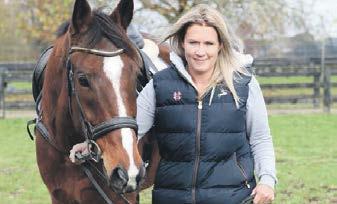
Main office 55 Victoria St, Cambridge
Reach a targeted rural and lifestyle audience each month by advertising your business in CountryLife; featured inside the Cambridge News and Te Awamutu News.
Readership 70,470
Distribution 26,100
To list your business, event or activity, contact Advertising Director Janine Davy: 027 287 0005 or janine@goodlocal.nz
Organisers of Sunday’s Ecology Expo at Te Awamutu Museum are delighted with the uptake from the community.
The expo was the second Tui & Tama Eco Expo held at the museum to coincide with Children’s Day. It attracted 218 people this year, almost a third more than the 165 who came last year.
Museum administrator Trish Seddon, who spent part of the free four-hour event decked out as a native bat, said last year’s expo was used to open the Te Awamutu Museum Education and Research Centre’s new premises in Rickit Rd.
“The numbers were good then but were even better this time around. It was a great day,” she said.
The children’s themed expo offered family activities presented by a number of eco-oriented groups operating in the region. They included Predator Free Te Awamutu/Taiea ta Taiao, Maungatautari Sanctuary Mountain, Waipā District Council Waste Minimisation, Smart Water Project, Pirongia Te Aroaro o Kahu Restoration Society, Project Echo, the Te Awamutu Toy Library, and The Re-Creators from Hamilton.
There was plenty of facepainting done, puzzles and activities enjoyed and a range of things made - from bracelets to predator traps.
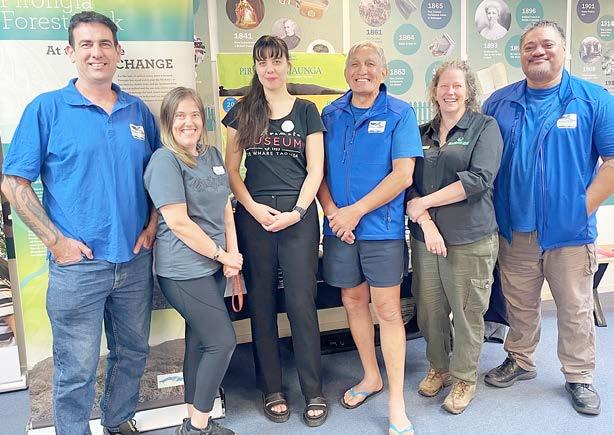
Shelley Wilson from Waipā District Council’s waste minimisation department said there was an encouraging uptake from families asking about the new recycling rules. A competition around the new regulations showed that many youngsters are benefiting from covering the topic
at school, she said, and many are better informed than their parents. A popular takeaway from their stand were fridge magnets listing the new requirements.
Some funky jewellery was being made under the guidance of Hamilton-based The Re-Creators, led on Sunday by Esther Gathambo


and Rhannon Forster. The ReCreators is a social enterprise that promotes upcycling through tutoring and workshops, with the items created selling through their online store.
Ellen Webb works for the charitable trust Go Eco which, among other initiatives, supports
the collaborative group advocating for native bats, Project Echo. She was there with several other groups working towards the elimination of pests and the restoration of the region’s natural flora and fauna.
Pirongia Te Aroaro o Kahu Restoration Society’s John Biddle said there was growing community involvement in the work the group is doing to return native species to Mt Pirongia. They are currently targeting the kōkako and are recording some success in translocating breeding pairs from Pureora Forest Park.
Nardene Berry of New Zealand Landcare Trust was there in support of Predator Free Te Awamutu. She said they were involved in the Taiea te Taiao corridor project linking Maungatautari and Mt Pirongia by planting along the Mangapiko Stream, and urged people to get involved by setting pest-control traps on their properties, whether in town or beyond.
Helping spread the word around risks associated with the spread of invasive gold clams in New Zealand waterways was Nathan Reymer, son of Waipā’s deputy mayor Liz Stolwyk. He said the clams multiply at the rate of 400 a day and urged water users to get involved in Ministry of Primary Industries (MPI) efforts to prevent their spread beyond areas where they have been found, including at Lake Karāpiro.





We are supporting the “Don’t Burn Waipa campaign” they are fundraising to fight against the proposed incinerator.
















We have FREE information booklets, and t-shirts, car and bumper stickers for purchase from our o ce.
We don’t want incinerators anywhere in New Zealand! It will harm our environment, our health and lower our house prices.






Cambridge Owned & Operated
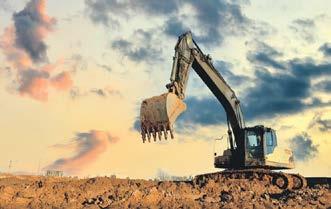
100’S







HOUSE WASHING - ROOF
HOUSE WASHING - ROOF
100’S OF SATISFIED CLIENTS www.ewash.co.nz
OF SATISFIED CLIENTS www.ewash.co.nz
Phone Mark for a FREE Quote 870 3081 | 027 432 2412
Cambridge Owned & Operated Phone Mark for a FREE Quote 870 3081 | 027 432 2412

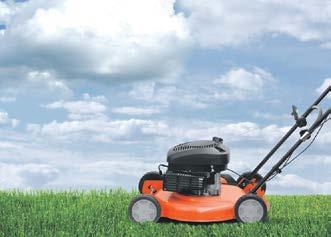



the best read of our online articles last month.

In a month where readership of our teawamutunews. nz website was up 75 per cent on January, the story broken by The News narrowly edged Steph Bell-Jenkins’ piece on Ōhaupō university student Pieta Bouma into first place.
Memorial Park playground upgrade came in third, reflecting the Te Awamutu community’s interest in what is going on in the park while our ever popular News in Brief was fourth and in fifth the opinion piece by Christchurch researcher Susan Turnbull on the new Pirongia cell tower.
Our home and publications pages on teawamutunews.nz are still the most popular non editorial parts of our website.



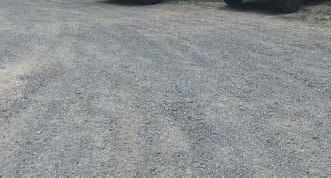

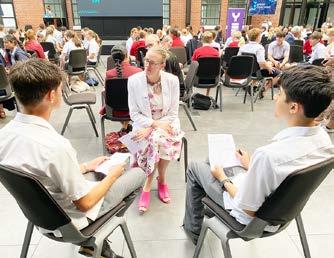



PDF/X –
4 spec, fonts pathed or embedded, text 100% black. Photos & logos – high resolution jpg (300dpi). All files to be large. Colours to be CMYK not RGB. Photos should be colour corrected with a total ink level of approximately 220%.
Rate card: Rates are based over a 12-month period starting from the date the first ad publishes. Rate bracket e.g. 6 insertions, 12 insertions etc. chosen allows ad sizes to vary within the rate bracket. If the number of insertions chosen is not met then a bulk charge will be applied at















